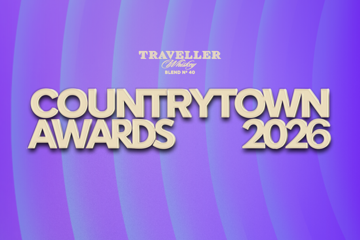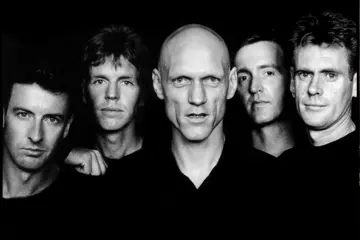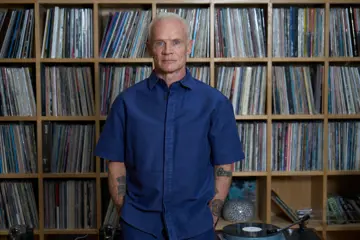The music streaming war really began in Australia today with Spotify, the biggest player in the game finally launching their service in Australia, taking the battle to Rdio who got into the Australian market early, launching a couple of months ago.
While advertising techniques and marketing incentives will all be a factor in whether people choose to adopt one service or the other, what it really comes down to for us is the selection of music that you are able to access. Spotify boasts that it has the largest library of music, claiming we can access something in the vicinity of 15 million songs through the service, but at this early stage, we're suffering the same excitements and frustrations on both platforms.
The inability to listen to The B-52s 1983 album Whammy! was massively frustrating for us in theMusic.com.au offices a couple of Fridays back. Unfortunately Spotify can't help us on that front either. If you're looking to seek out underground garage punk then your local record store is still your best bet; a search for seminal acts like Supercharger (US, not German), The Mummies, The Beat (US, not UK) and Live Fast Die saw us come up empty handed. While Spotify has a relationship with Alternative Tentacles, Rdio has one with Bomp! – there's a lot of give and take like that, but not enough in any which way to get us to make a definitive decision as to which one is better than the other.
Looking at it from more of a mainstream perspective, Spotify does look like it has more co-operation with the major labels than Rdio. Because trawling through hundreds of mainstream artists' availability on both services is time consuming and boring, we used a few compilation releases to see how they stack up.
Don't miss a beat with our FREE daily newsletter
Songs For My Ute Volume 7 – released through Sony but compiling tracks from all over the place – is available on both platforms, but neither have the compilation available in full. Rdio has 16 of the compilation's 40 tracks available, blown out of the water by Spotify which has 35 of them up for streaming. Another Sony compilation, this year's Glenn A Baker compiled It's A Blues Thing has 34 songs on Spotify and a mere 12 on Rdio.
On the technical side of things, Spotify is not compatible with Apple Airplay unless you have a premium account and use your iPhone or iPad to stream music. Rdio is much the same, only available through the iPhone app on devices running iOS 4.2+.
The Spotify platform is intrinsically linked to Facebook, meaning that everyone can see what you're listening to at any given time. This feature is easy to disable with Rdio, but turning it off in Spotify is proving more complicated.
Usability wise, they're both pretty easy to navigate, though both of them have their problems with crashing or just not working from time to time. But, all things considered, they're rather stable and user-friendly.
One of the coolest aspects of Spotify on first glance is their use of apps. Third parties can develop apps to be approved by Spotify that deliver playlists and news and general enriches the listening experience.
Rdio has the option of listening through a regular internet browser which might not be that much of an advantage for some, but for computers with limited resources it may make its operation smoother.
We've not yet had the opportunity to examine the other streaming services that are also looking for a piece of this exciting new music market; JB Hi-Fi have been on the market for some time with their NOW product, while Telstra have aligned themselves with MOG and will hope it can make some inroads into a market which is seemingly becoming more and more crowded each week. While dwarfed completely by the news of Spotify's launch Sony Music also threw their hat in the ring this morning, unleashing an iOS app into the Apple App Store this morning for their Music Unlimited service.
If price is truly the deciding factor for consumers, then Spotify could well have this wrapped up already as they offer an ad-supported free subscription for desktop users. But one imagines the battle is far from over.
Follow theMusic.com.au on Spotify here! We've been listening to sound effects...
Follow theMusic.com.au on Rdio here! We've been listening to country music...















